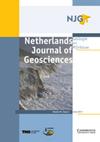荷兰诱发地震活动概况
IF 2.3
2区 地球科学
Q3 GEOSCIENCES, MULTIDISCIPLINARY
Netherlands Journal of Geosciences-Geologie En Mijnbouw
Pub Date : 2022-01-10
DOI:10.1017/njg.2021.14
引用次数: 17
摘要
摘要本文介绍了荷兰地下工程诱发地震活动的概况。我们的概述包括天然气开采、地下储气、地热开采、盐溶液开采和开采后进水引起的事件。与自然地震活动相比,诱发事件通常较小(震级≤4.0)。然而,由于表层土壤较软且震源较浅,在荷兰,公众可能会感受到超过1.5-2.0级的地震。这些事件可能会破坏房屋和基础设施,并破坏公众的接受度。Felt事件是由荷兰北部的天然气生产和东南部的开采后水侵入引起的。臭名昭著的例子是格罗宁根大气田的天然气生产引起的地震,震级高达3.6级。在这里,发生了广泛的非结构性破坏,公众支持被撤销。因此,生产将于2022年终止,留下约8000亿立方米未开采的天然气。迄今为止,在地下储气库、地热生产和盐溶液采矿项目中观测到的事件震级非常有限(震级≤1.7)。然而,在未来不能排除更大的事件。因此,项目或行业特定的风险治理协议、广泛收集地下数据和充分的地震监测对于现在和未来几十年荷兰地下资源的可持续利用至关重要。本文章由计算机程序翻译,如有差异,请以英文原文为准。
An overview of induced seismicity in the Netherlands
Abstract We present an overview of induced seismicity due to subsurface engineering in the Netherlands. Our overview includes events induced by gas extraction, underground gas storage, geothermal heat extraction, salt solution mining and post-mining water ingress. Compared to natural seismicity, induced events are usually small (magnitudes ≤ 4.0). However, due to the soft topsoils in combination with shallow hypocentres, in the Netherlands events exceeding magnitude 1.5–2.0 may be felt by the public. These events can potentially damage houses and infrastructure, and undermine public acceptance. Felt events were induced by gas production in the north of the Netherlands and by post-mining water ingress in the south-east. Notorious examples are the earthquakes induced by gas production from the large Groningen gas field with magnitudes up to 3.6. Here, extensive non-structural damage incurred and public support was revoked. As a consequence, production will be terminated in 2022 leaving approximately 800 billion cubic metres of gas unexploited. The magnitudes of the events observed at underground gas storage, geothermal heat production and salt solution mining projects have so far been very limited (magnitudes ≤ 1.7). However, in the future larger events cannot be excluded. Project- or industry-specific risk governance protocols, extensive gathering of subsurface data and adequate seismic monitoring are therefore essential to allow sustainable use of the Dutch subsurface now and over the decades to come.
求助全文
通过发布文献求助,成功后即可免费获取论文全文。
去求助
来源期刊
CiteScore
4.00
自引率
25.90%
发文量
14
审稿时长
>12 weeks
期刊介绍:
Netherlands Journal of Geosciences - Geologie en Mijnbouw is a fully open access journal which publishes papers on all aspects of geoscience, providing they are of international interest and quality. As the official publication of the ''Netherlands Journal of Geosciences'' Foundation the journal publishes new and significant research in geosciences with a regional focus on the Netherlands, the North Sea region and relevant adjacent areas. A wide range of topics within the geosciences are covered in the journal, including "geology, physical geography, geophyics, (geo-)archeology, paleontology, hydro(geo)logy, hydrocarbon exploration, modelling and visualisation."
The journal is a continuation of Geologie and Mijnbouw (published by the Royal Geological and Mining Society of the Netherlands, KNGMG) and Mededelingen Nederlands Instituut voor Toegepaste Geowetenschappen (published by TNO Geological Survey of the Netherlands). The journal is published in full colour.

 求助内容:
求助内容: 应助结果提醒方式:
应助结果提醒方式:


